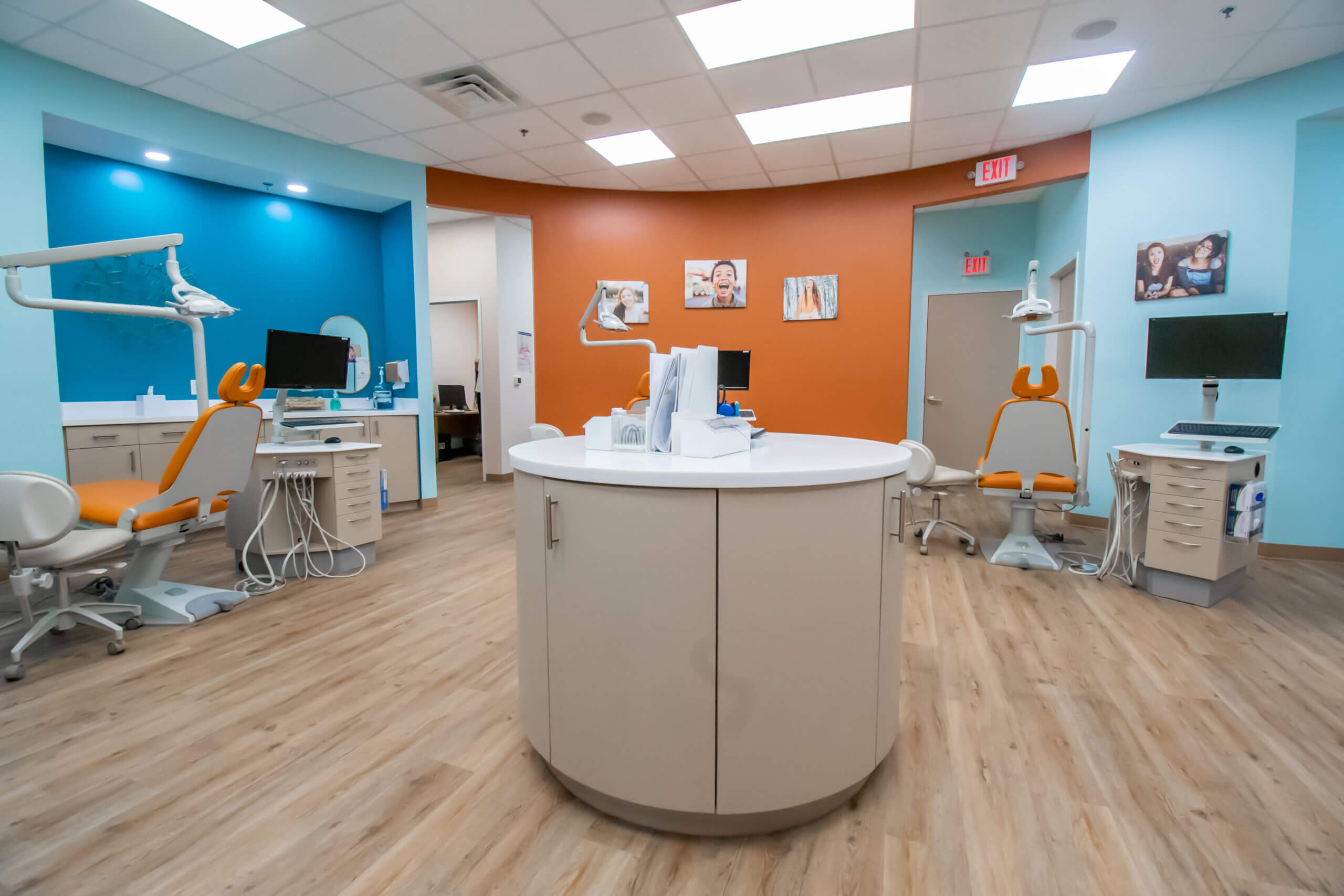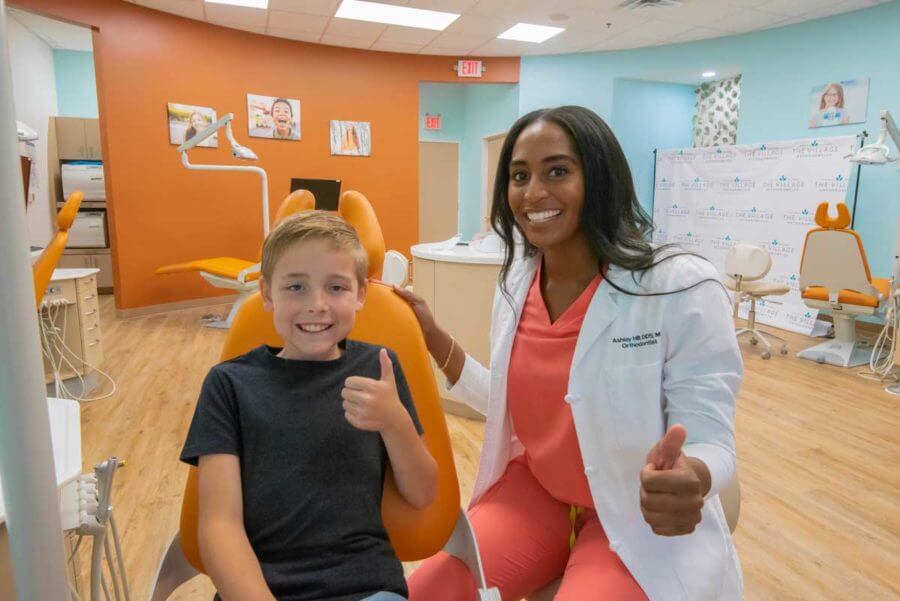
Orthodontics in Kyle, TX
Straight teeth can make a huge difference!
A great-looking smile can boost your self-confidence and have a positive impact on social and professional opportunities. Orthodontic treatments are original smile makeover tools and you’ll be happy to know that you’re never too old to take advantage of them. With significant advances in orthodontics, everyone can attain straighter teeth with a treatment that’s right for them and meets their individual needs.
How Do Ortho Appliances Work?

The amazing thing about orthodontics is that it harnesses the body’s natural ability to remodel its own tissue. Teeth aren’t fixed rigidly in their supporting bone. Instead, they’re held in place by a hammock-like structure called the periodontal ligament, which is very responsive to forces placed on the teeth.
Orthodontic appliances move our dentition by careful application of light, constant pressure, gently reshaping the bone, and repositioning our bite.
Benefits of Orthodontics
When considering your options to straighten your teeth, you may be offered treatments other than an orthodontic route. Some common cosmetic dentistry treatments are bonding, veneers, dental crowns, and bridges, or even implants. While all of these may be possible, they work better for patients who want their teeth to be more aesthetically pleasing. These methods provide a nicer-looking smile, but they require irreversible contouring to your natural teeth.
What if your teeth are already a nice size and shape? Maybe they could just benefit from being whiter and straighter. In this case, orthodontics, in combination with bleaching, is a perfect option.
During your consultation, we’ll do a thorough exam, address all of your concerns, and make our recommendations. Working together, we can help you decide which option is best for you and we’ll help you attain the goals you have set for your new smile.

Dental Check-Ups and Orthodontics in Young Children
In most cases, a child will need to begin their orthodontic transformation once all (or most) of their permanent teeth are in. But in some cases, early intervention is needed.
It’s crucial to take your growing child for regular dental cleanings and checkups. During these important visits, your family dentist will examine the development of your child’s mouth. If issues start to present themselves, they can be caught and addressed quickly.
For instance, if it looks like your child has a narrow arch and won’t have enough room for all of her permanent teeth to come in correctly, Phase I (Phase One) orthodontic treatment, also called ‘interceptive orthodontic treatment,’ can begin. By providing an arch expansion, your child’s permanent teeth won’t be forced to be crowded.
This is an issue that can be dealt with later in life, as an adult – but it’s much easier and quicker to treat in a child since we can take advantage of their growing mouth. Phase I treatment uses orthodontic appliances, retainer-like devices, and partial braces to prevent a problem from occurring, correct a current problem, or modify your child’s growth and dental development.
Types of Orthodontic Treatments
Some examples of orthodontic appliances are traditional metal braces, inconspicuous clear or tooth-colored braces, and clear aligners such as Invisalign.
When you imagine someone wearing braces, you probably picture small metal brackets bonded to the front of the teeth, with a thin wire running through them. This time-tested style remains very popular — but it’s no longer the only option. Clear braces use brackets made of ceramic or plastic, which, except for the slim archwire, is hardly visible.
Removable clear aligners such as Invisalign, are an alternative to fixed orthodontic appliances. They consist of a series of clear plastic “trays” that fit over your teeth exactly; each one moves your teeth a little bit until they are in the proper position.
If during your consultation we determine that you would, in fact, benefit most from orthodontics, we will discuss which form is best for you.